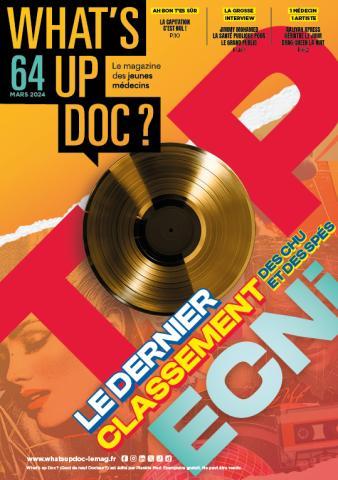In this 6th issue, you will find a new contribution dealing with the Materials and Methods section (The British Medical Journal) , which can also be called « Patients and Methods » (The Lancet), or « Methods » (The European Heart Journal or The New England Journal of Medicine).
The focus will be on the use of tenses, especially the simple past (more than 90% of the verbs are in this tense), and the passive voice which are both typical features of this section. We are also going to address the question of subheadings, as this section is often subdivided into several parts for the sake of clarity.
Dans ce 6ème numéro, vous trouverez une nouvelle contribution portant sur la partie Matériels et Méthodes, que l’on peut également appeler « Patients et Méthodes » ou « Méthodes ».
Nous insisterons sur l’utilisation des temps, tout particulièrement celle du prétérit (plus de 90% des verbes sont conjugués à ce temps), et de la voix passive, qui caractérisent cette partie. Nous allons également traiter de la question des sous-titres, étant donné que cette partie est souvent subdivisée en plusieurs sous-sections pour une plus grande clarté.
When writing the Materials and Methods section, the following points should be taken into account:
- The background to the study must be provided (type, location and duration of study, number of subjects involved, selection criteria…).
- A precise description of the methods and procedures used must be provided so that readers can assess the validity and the reliability of the results. In addition, other researchers should be able to obtain the same results using the same techniques (reproducibility).
- Statistical analysis of the data must be provided at the end of this section.
Lors de la rédaction de la partie Matériels et Méthodes, les points suivants devront être pris en compte :
- Le contexte de l’étude doit être précisé (type, lieu et durée de l’étude, nombre de sujets impliqués, critères de sélection…).
- Une description précise des méthodes et des techniques utilisées doit être fournie de manière à ce que les lecteurs puissent évaluer la validité et la fiabilité des résultats. En outre, d’autres chercheurs devraient être capables d’obtenir les mêmes résultats en utilisant les mêmes techniques (reproductibilité).
- L’analyse statistique des données doit être fournie à la fin de cette partie.
Here is an example of a typical Materials and Methods section:
Voici un exemple type de la partie Matériels et Méthodes :
Patients and methods
Patients who had undergone R0 resection for colorectal cancer between 2006 and 2010, and who had no clinical, radiological or endoscopic signs of tumour recurrence at the start of the study were included. All of the patients gave their written informed consent to take part in the study which was approved by the local ethics committee. Follow-up comprised one consultation every 3 months during the first year, every 6 months in the next 2 years and once a year thereafter. Tumour markers were measured and abdominal ultrasonography was performed at every follow-up visit. Colonoscopy and/or abdominal computed tomography were performed only if recurrence was suspected.
Quality of life was assessed using the basic European Organization for Research and Treatment of Cancer Quality of Life Questionnaire, EORTC QLQ-C30 (version 3.0), once written authorization for its use had been obtained. A validated colorectal cancer module from Thomas Küchler was also used. This tool comprises specific questions on postoperative symptoms for colorectal cancer that do not appear in the general questionnaire; these include changes in eating habits, weight loss, abdominal heaviness and black stools. The 52 questions of the module have four possible answers scored from 1 to 4, such that higher scores correspond to more severe symptoms. The test was administered during an interview conducted by a single surgeon who was unaware of the clinical and surgical characteristics of the patients.
The following variables relating to quality of life were analysed: age, gender, type of resection and whether lymphadenectomy was performed, and any history of a major postoperative complication (intra-abdominal abscess or anastomotic dehiscence).
Statistical analysis
Test questions were classified according to whether they referred to the social, emotional, physical or clinical spheres of quality of life, and the scores obtained were compared based on the mean value of their ranges using the Mann-Whitney test. P < 0.05 was considered statistically significant.



